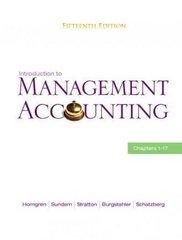Question
Historically, airlines tend to have a low profit margin. However, during the time frame this occurred (pre-COVID), airlines were earning record profits thanks to baggage
Historically, airlines tend to have a low profit margin. However, during the time frame this occurred (pre-COVID), airlines were earning record profits thanks to baggage fees, lower fuel prices, and better statistical algorithms. In regards to the last point, complex statistical algorithms are used to overbook flights so that airlines can reduce the number of empty seats on flights. A Boeing 747 carries about 524 passengers in the typical two-class layout. Approximately 5% of flyers no show. So on a flight with 524 passengers, about 25 will not show up. Keep in mind that United had an average of 4523 daily departures in 2016.
The average airfare to Louisville, KY (which was where they made the connection) is $150 per passenger (not including fees and taxes). The greatest cost is jet fuel which is $1.47 per gallon. A Boeing 74 burns approximately 1 gallon of gas every second. A 1 hour 22 minute flight, similar the one in the news story, would burn 4920 gallons. The cost of that flight crew would have been about $1000 total during that time (82 minutes). The cost of maintenance for that flight would be approximately $2100. Ignoring revenue from checked bags, upgrades, and commercial shipping on passenger flights as well as variable costs related to ground operations, what is the gross margin of that flight? Imagine that the flight had a typical no-show rate. What would the gross margin have been with only 499 passengers?
Step by Step Solution
There are 3 Steps involved in it
Step: 1

Get Instant Access to Expert-Tailored Solutions
See step-by-step solutions with expert insights and AI powered tools for academic success
Step: 2

Step: 3

Ace Your Homework with AI
Get the answers you need in no time with our AI-driven, step-by-step assistance
Get Started


